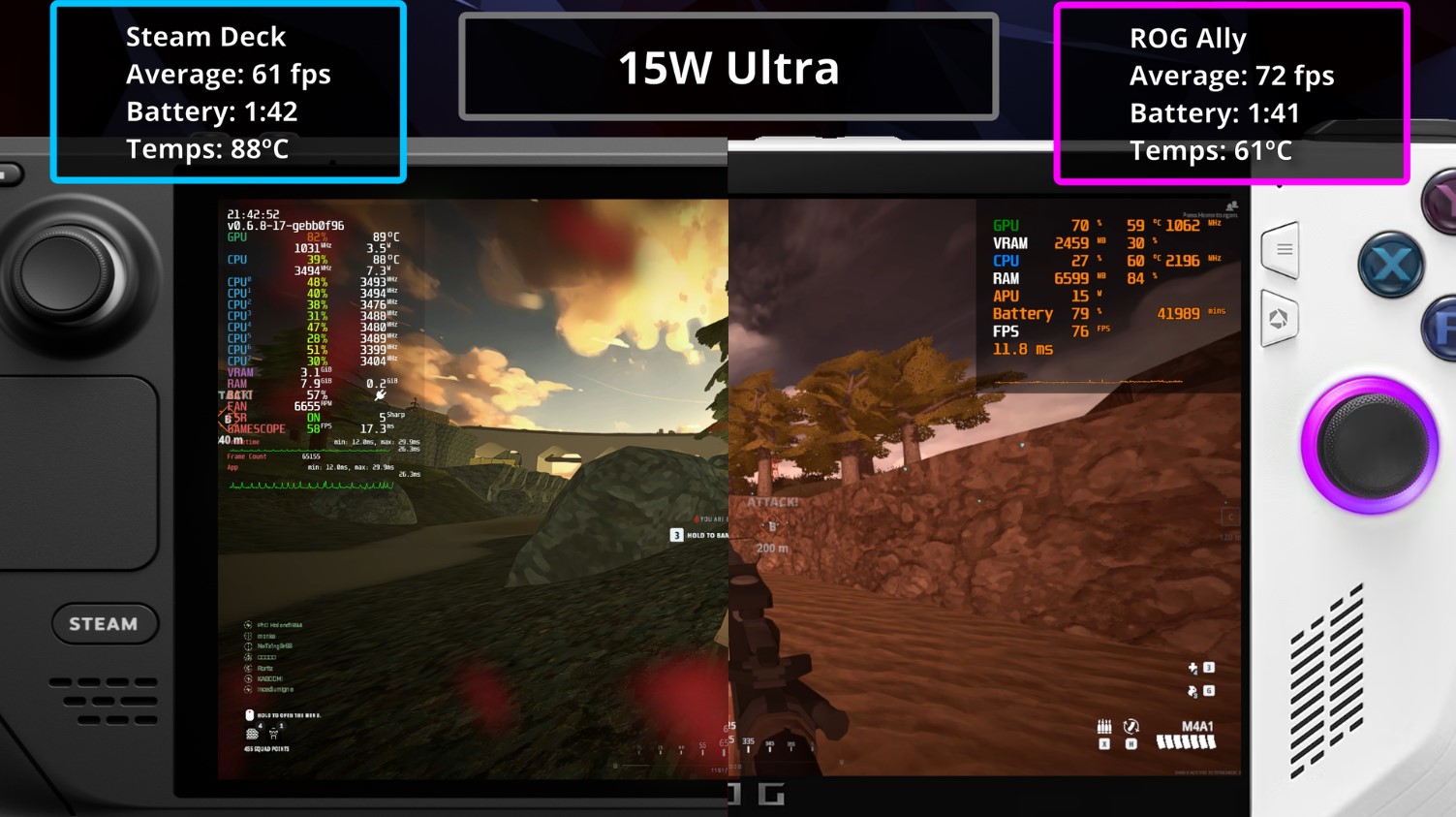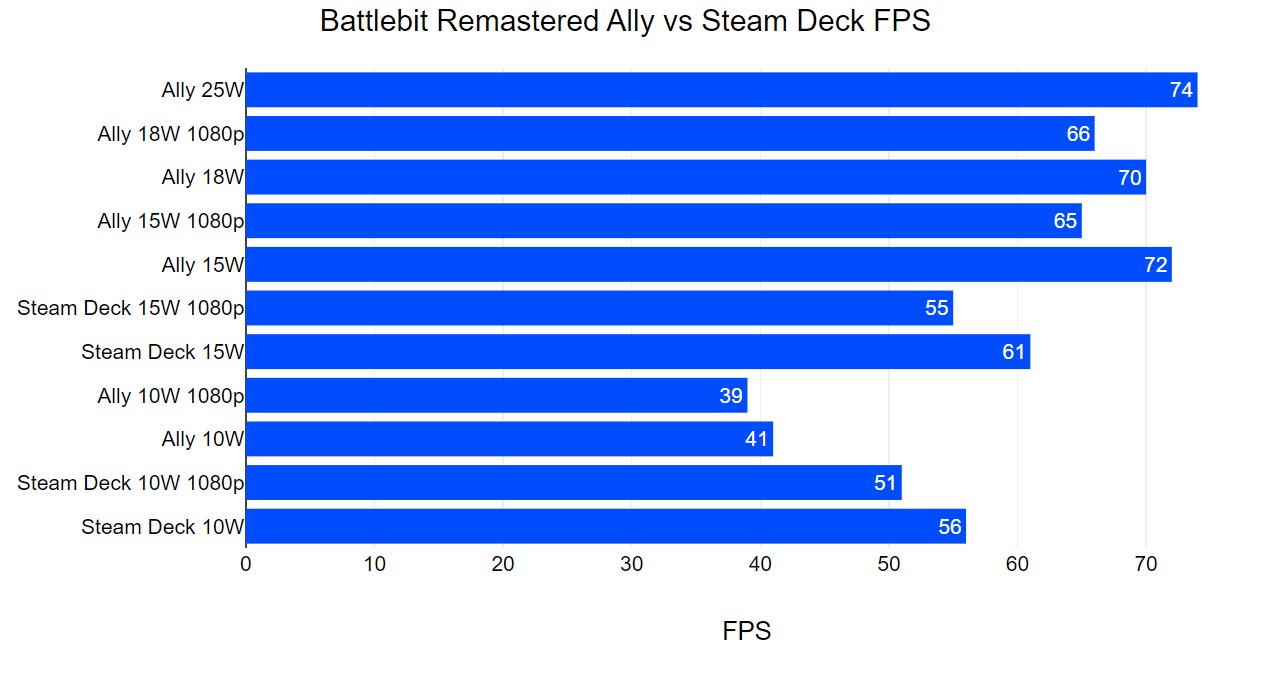Hello, gamers! Today we bring you an exciting, in-depth comparison between two powerful portable gaming devices – the Ally and the Steam Deck. We’ve pushed these devices to their limits to see how they perform under the common configuration of 15W along with the rest of the available power options. Join us as we evaluate their raw processing power, battery longevity, and temperature management in an ultimate Ally vs Steam Deck test.
Ally vs. Steam Deck: A 15W Gaming Performance Test
At 15W, the Ally takes an early lead in the performance race. Achieving an average of 72 fps, it outpaces the Steam Deck by around 20%. However, the Steam Deck counters with an impressive 61 fps and matches the Ally stride for stride in battery life. But it’s worth noting, the Steam Deck heats up considerably more, reaching a steamy 88 degrees Celsius compared to the Ally’s cooler 61 degrees Celsius.

High-intensity Gaming: Battlebit Remastered at 1080p
Our next stage of testing takes us into the immersive world of Battlebit Remastered at 1080p on the Ultra Preset. It’s a demanding test, but the Ally remains unfazed, maintaining its lead over the Steam Deck, albeit by a smaller margin.
Even though the Steam Deck lags behind in raw performance, it certainly doesn’t back down, putting up an impressive fight at 55 fps. In terms of battery life and temperature, both devices echo their earlier performances, demonstrating their endurance in the gaming arena.
10W Gaming Challenge: Performance under Pressure
We then decided to turn up the pressure, reducing the power limit to 10W, known as the Ally’s Achilles’ heel. In the less demanding environment of Battlebit Remastered, the Ally bravely battles on, delivering a respectable 41 fps and impressing us with an increased battery life of 2 hours and 12 minutes.
The Steam Deck, though running hot at 79 degrees Celsius, still matches the Ally’s battery life and even excels in the fps race, getting close to the performance it demonstrated at 15W.
Pushing the Limits: 1080p Gaming at 10W
The final round of our comparison took us back to Battlebit Remastered, but this time at 1080p using the ultra preset and limiting both devices to 10W. The Ally maintains a consistent fps, very close to its 720p results, while the Steam Deck shows a bigger gap between playing at 720p and 1080p. It’s evident that if you’re looking to connect your Deck to an external monitor and play at 1080p using the Ultra preset, you’ll have to sacrifice some fps.
Extended Testing: Ally’s Additional Power Options
To give you a complete picture, we decided to test the Ally’s performance at higher wattages. We played Battlebit Remastered with the APU manually set to 18W and the Ally in turbo mode. Interestingly, using more power doesn’t necessarily translate to higher fps. If you’re considering the Ally, keep in mind that opting for higher fps might mean sacrificing precious battery life.
Conclusion: A Matter of Preference
To wrap up, both the Ally and Steam Deck proved their worth in the gaming battlefield. If you’re seeking raw power, the Ally, especially at 15W, offers robust performance. However, if battery life precedes you, the Steam Deck is your go-to device, promising over 2 hours of gameplay while delivering an admirable fps rate.

Ultimately, the choice boils down to what matters most to you in a gaming device – pure performance or longevity. We’d love to hear your thoughts in the comment section below!




